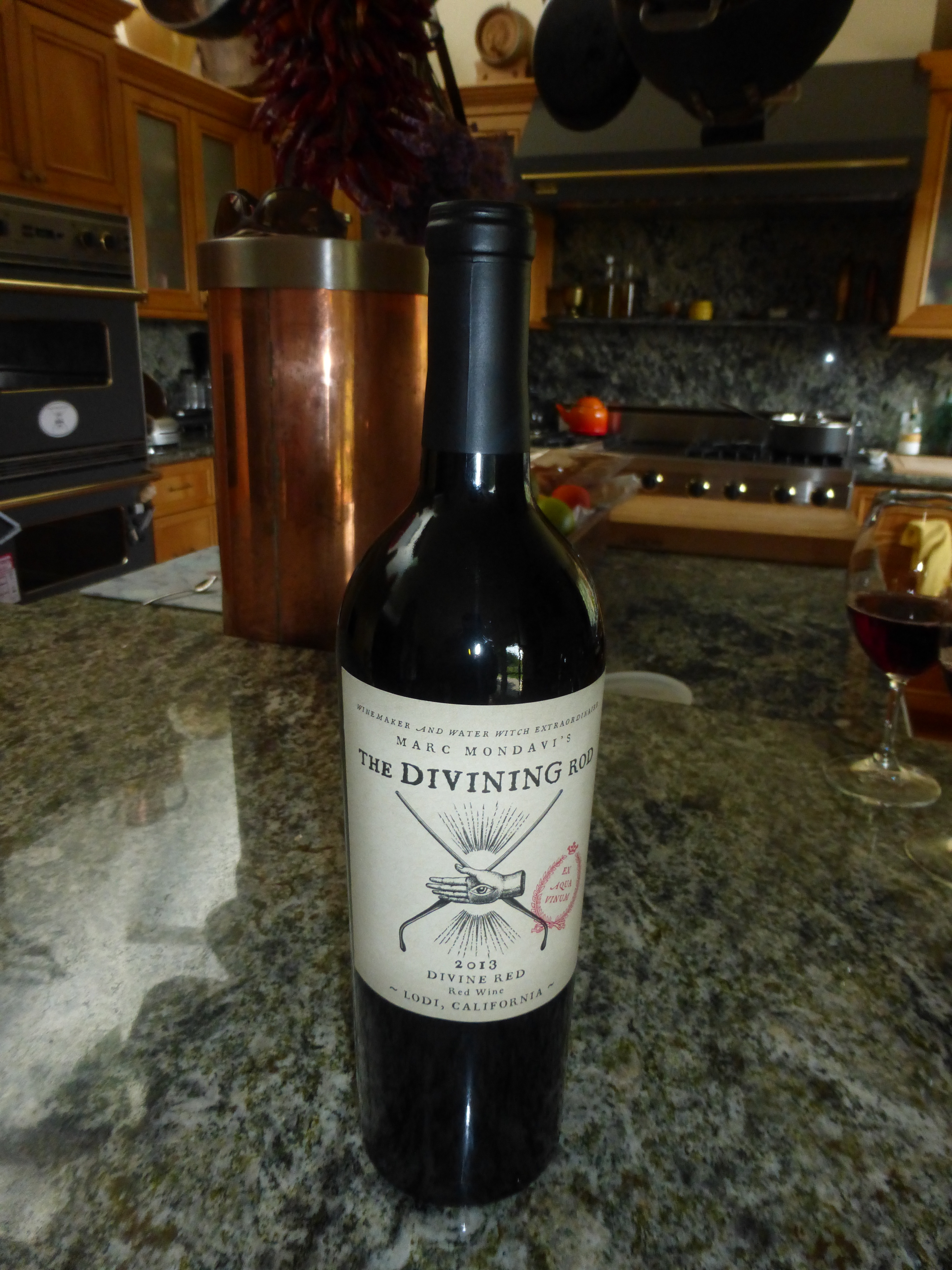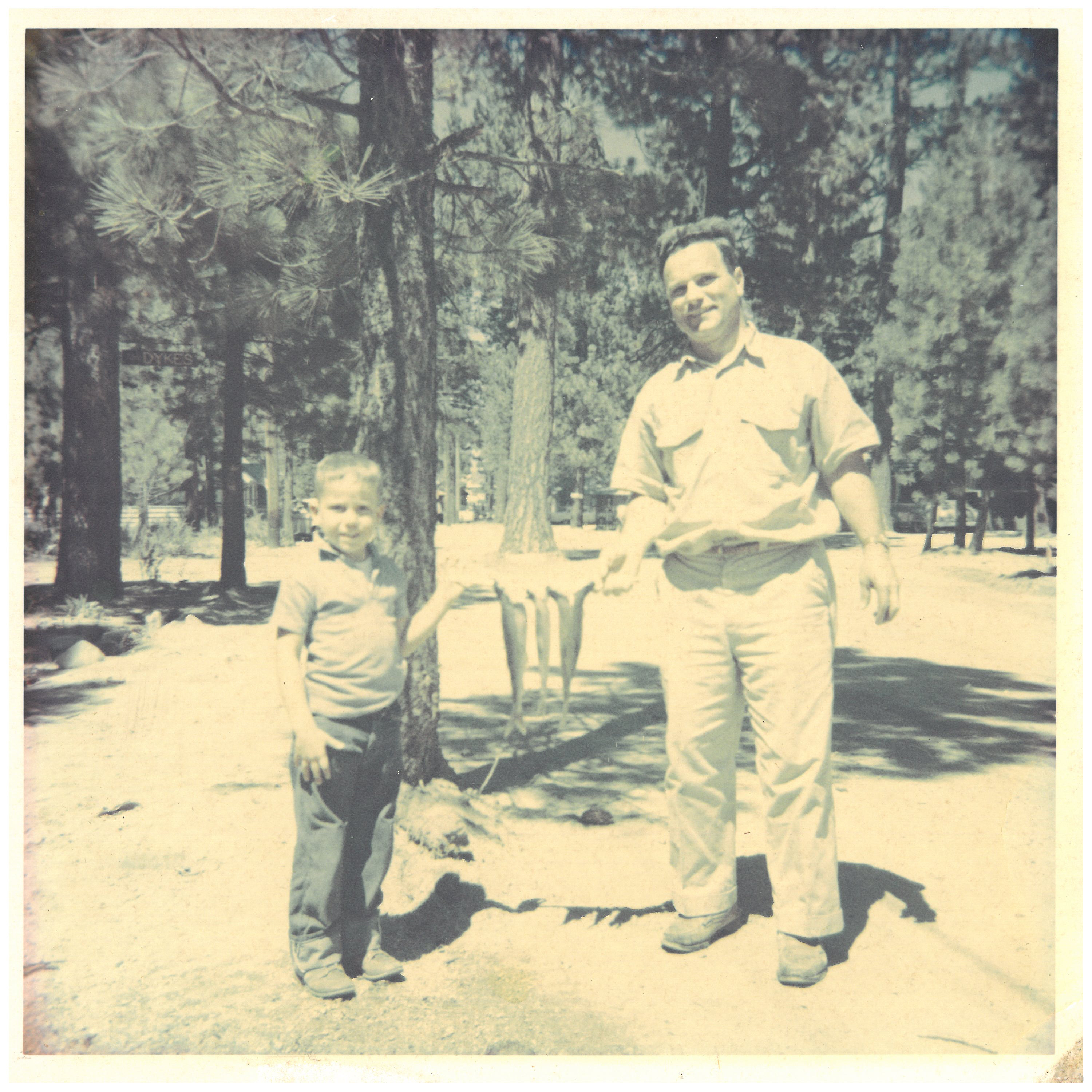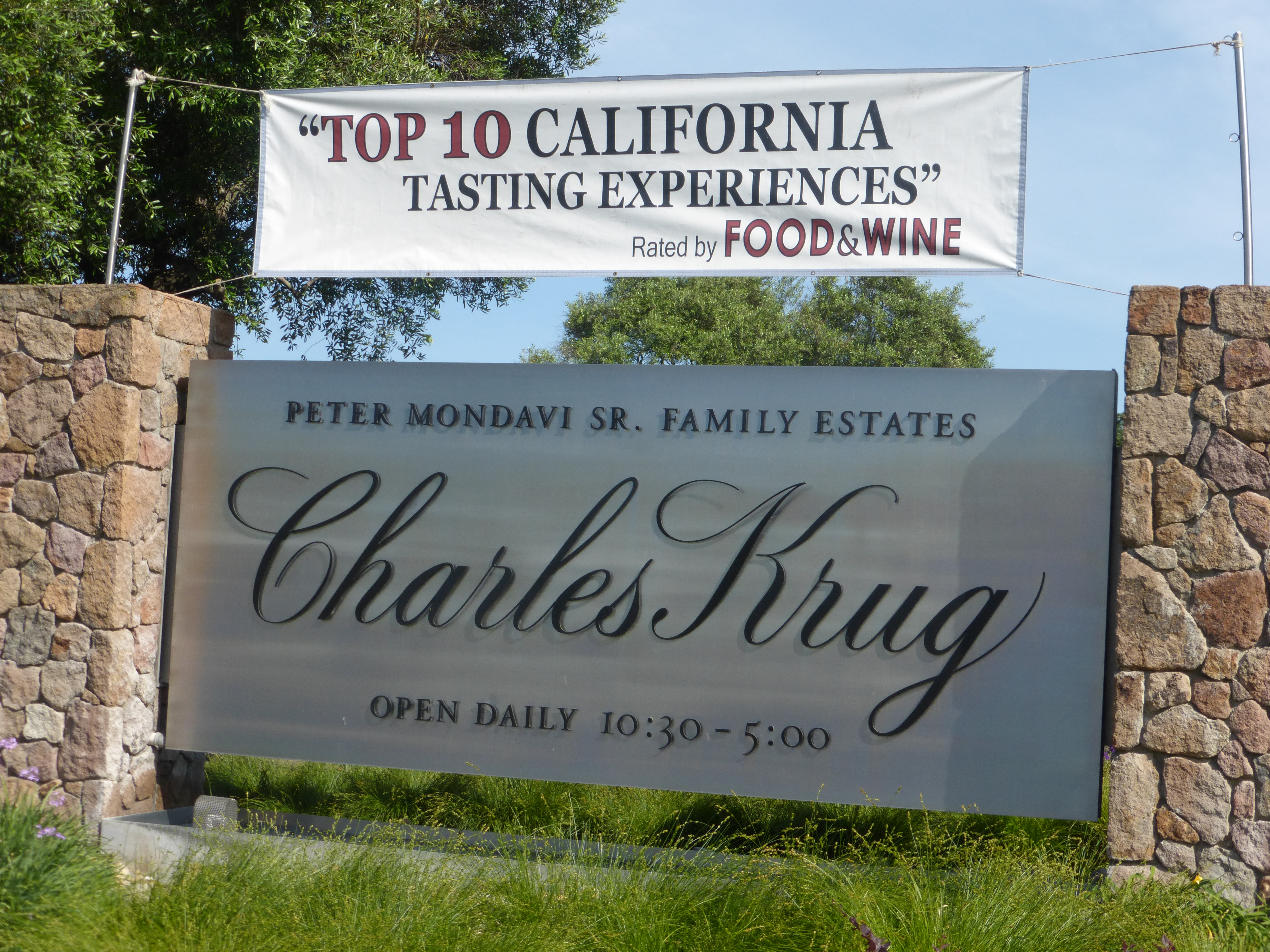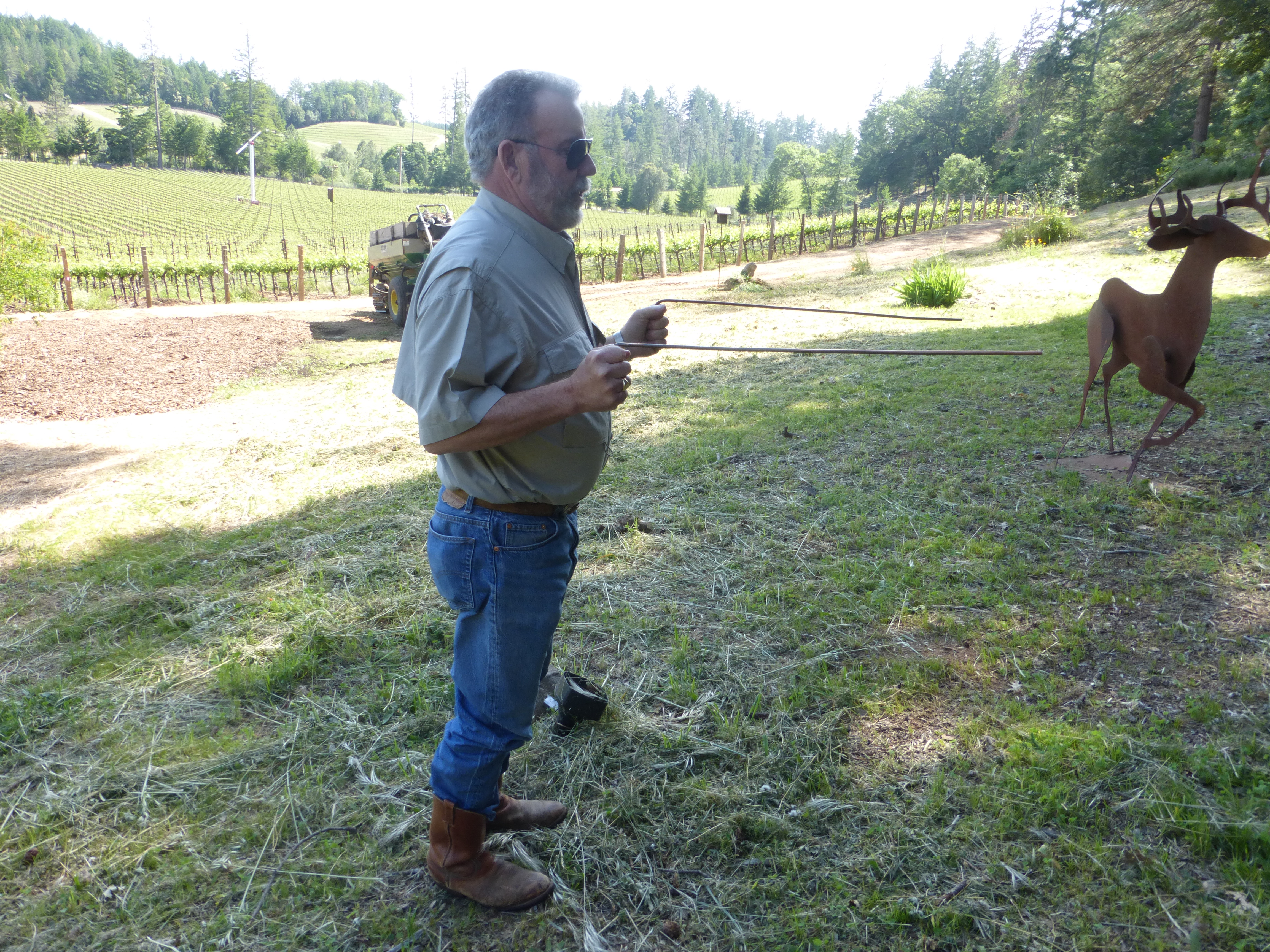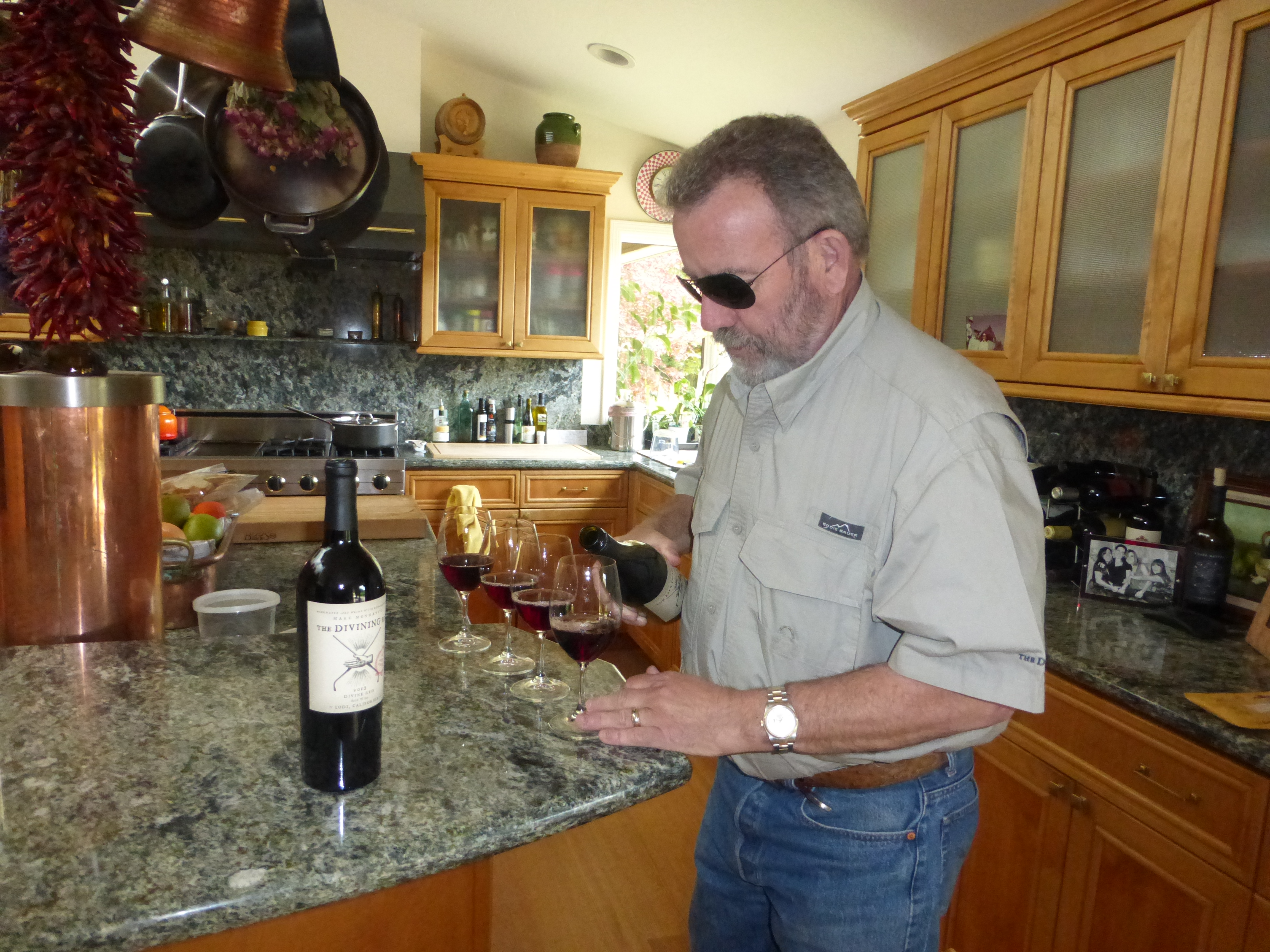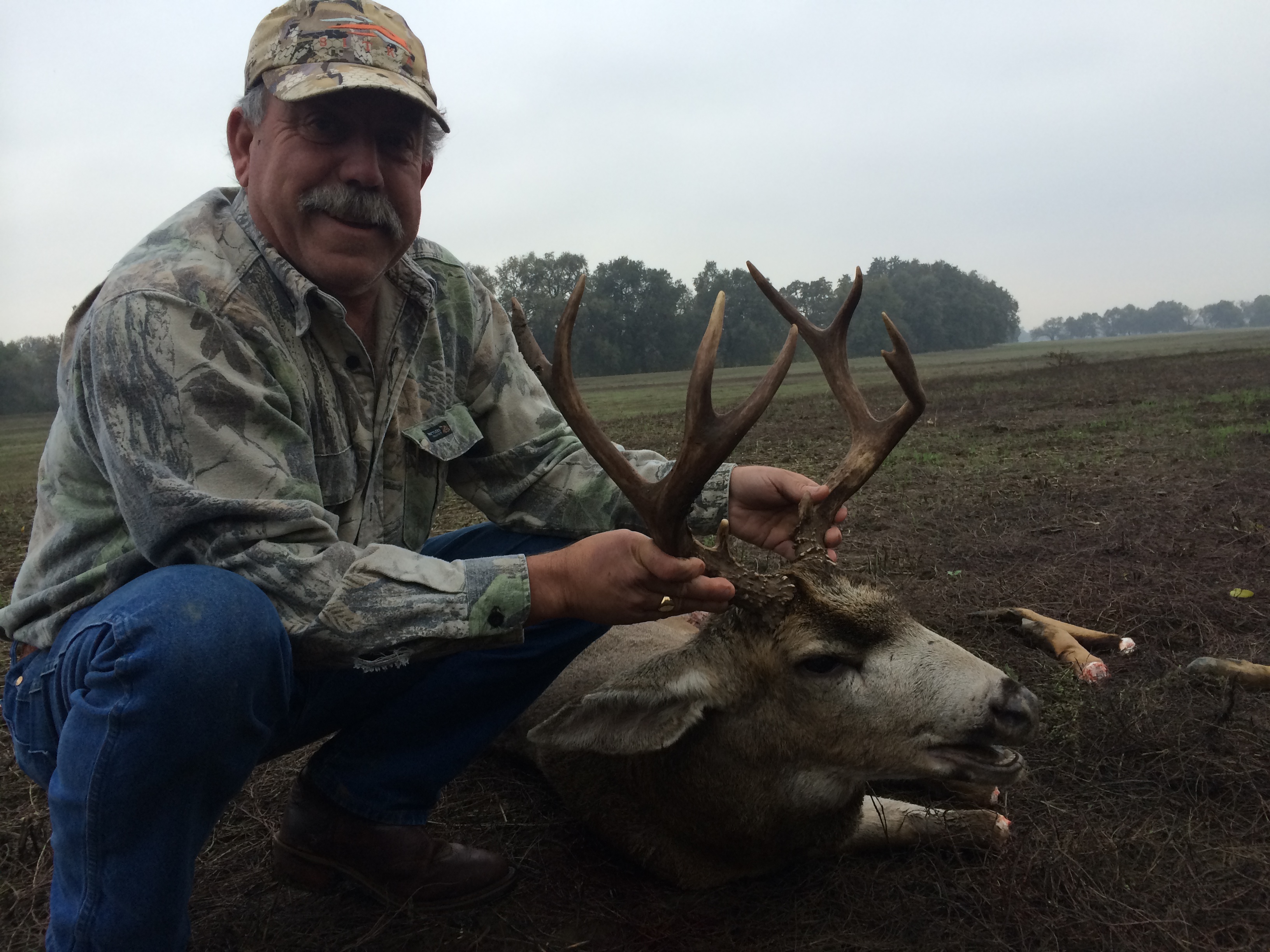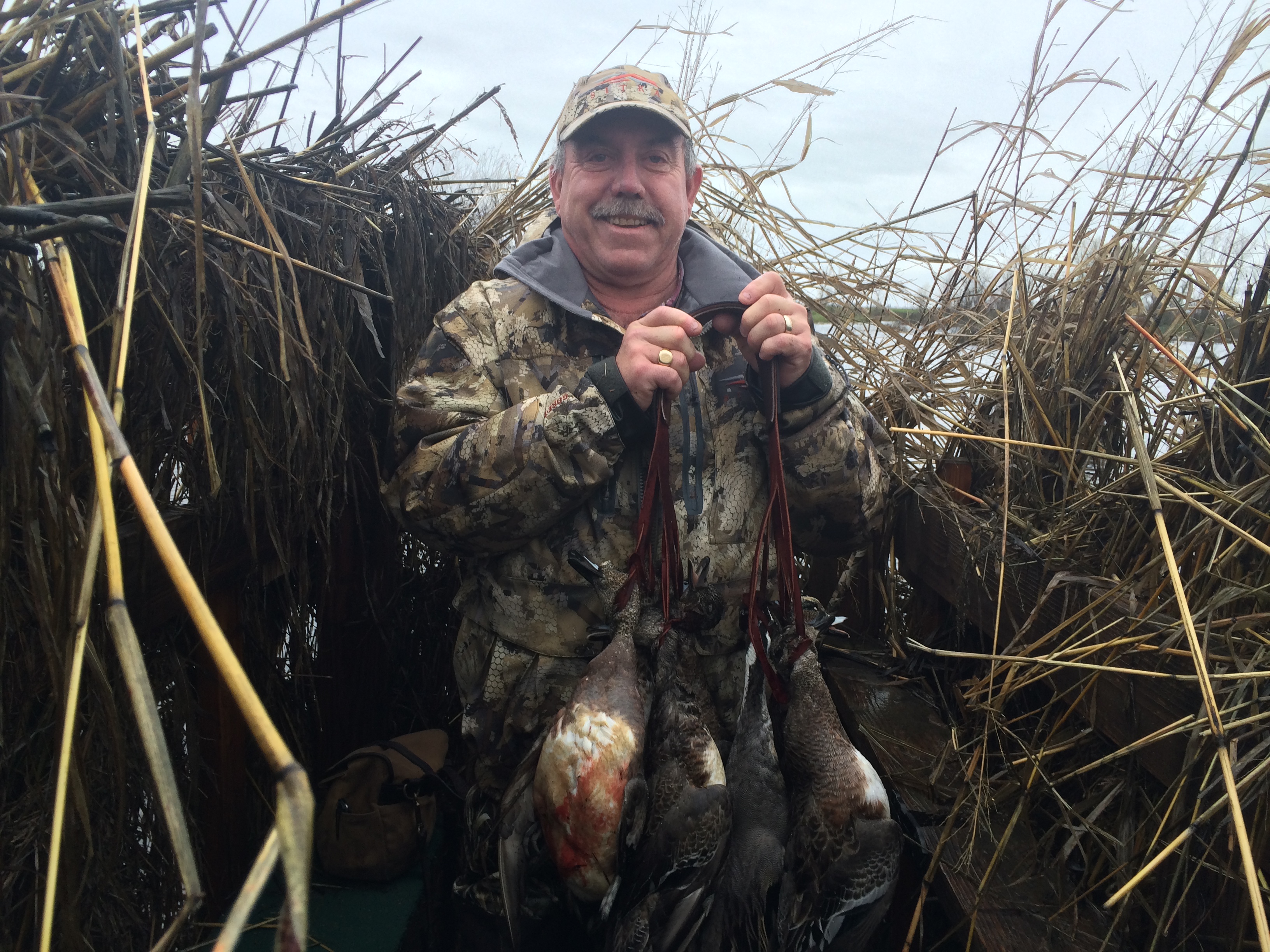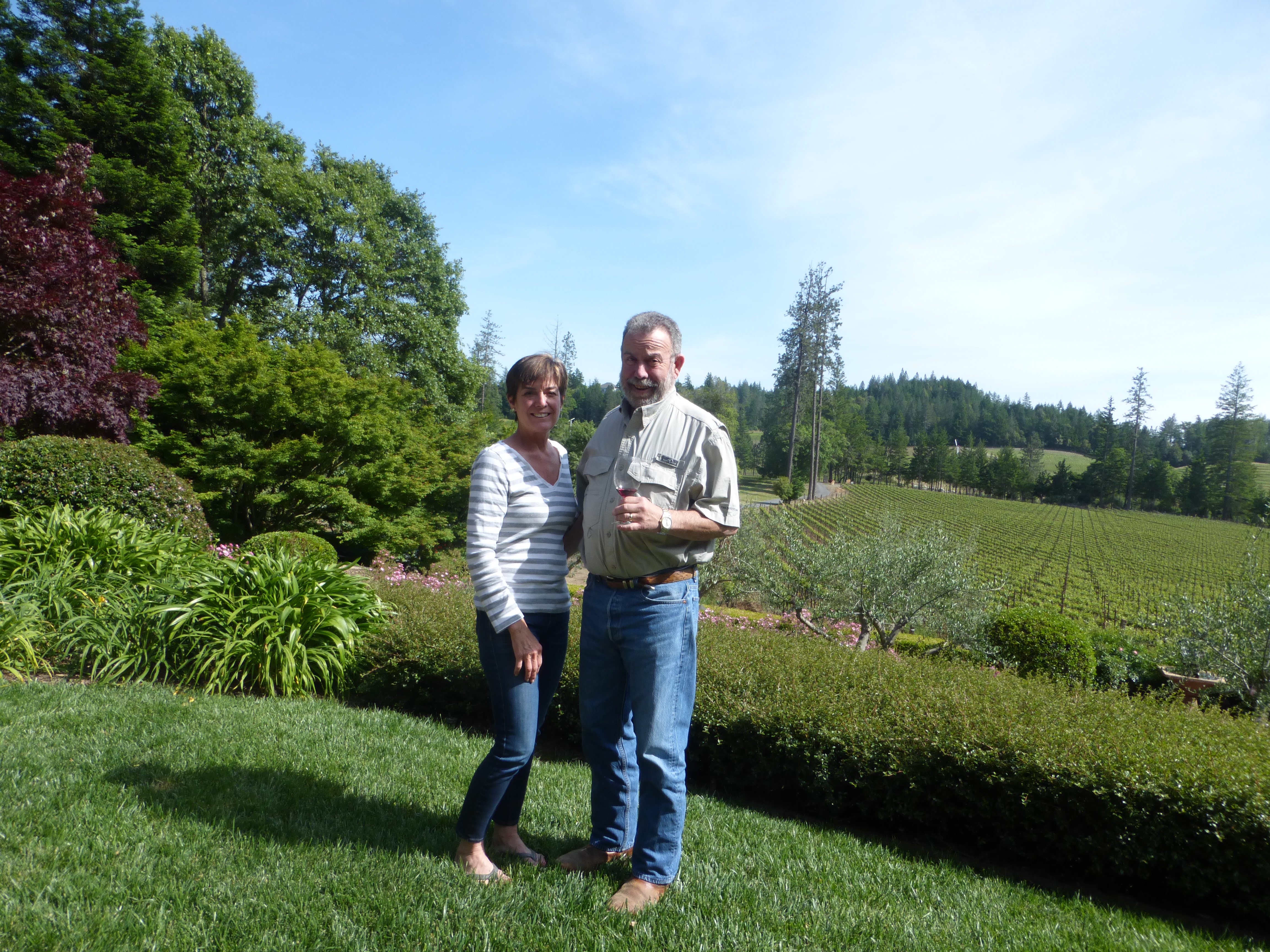Wines, Vines, Fishing Lines, Divine
The following appears in the July issue of California Sportsman:
By Chris Cocoles
Photos by Chris Cocoles and Marc Mondavi
ANGWIN (Napa County)–The fourth generation isn’t all that different from the third generation, which isn’t all that different from the second or even the first generation.
It’s a family brought together by the harvest of Napa Valley grapes that become the many wine varietals of Charles Krug, one of the region’s giants. It’s also a family tree that’s shared its love of the outdoors for six decades.
Marc Mondavi is among the latest generations of his family to keep up the tradition started by his grandparents – Italian immigrants Cesare and Rosa, who purchased Charles Krug in 1943 – and continued by Marc’s father Peter Mondavi Sr., who passed away at 101 in February.
Now it’s Marc and his brother Peter Jr. carrying on the family business (their late uncle, Robert, created his own successful label before that side of the Mondavi family sold its $1 billion interests in what remains known as Robert Mondavi Winery to a private conglomerate in 2004). Marc and his wife Janice have four daughters who either work directly in or have a connection to the wine industry. And they all seem obsessed with fishing or hunting (or both).
“I taught my wife to fly fish and now she’s a fanatic,” Marc says.
“One daughter is a big-game hunter and another is a little bit of a duck hunter. And two of them are fly anglers and kind of follow me on that,” adds Janice Mondavi.
Marc is also what is known as a “water witch,” among the gifted few capable of using divining rods to detect underground sources of water, which can be a godsend for these vineyards spread across these rolling hills and valleys of wine country.
From that water they drill for, to the rivers and lakes they fish, to the grapes they grow to create their wines, all of the Mondavis take advantage of the natural surroundings and embrace what they do and who they are.
STASHED SOMEWHERE AMID BOXES of memories and family heirlooms is Marc Mondavi’s first pay stub from working for his dad at Charles Krug. He was about 10 years old when first on the payroll.
“Twenty-five cents an hour. I don’t think Dad knew the minimum wage back then; I don’t know what it was,” Mondavi says while sitting on the shady veranda on his and Janice’s property on Howell Mountain, just uphill from St. Helena and the Krug vineyards.
“At the beginning I’d just do basic analysis in the lab and would wash glasses and sample bottles. As I got older I got more in-depth with all the analysis and then my father would always include me in all the tastings. He would educate me and explain to me why this particular wine had a problem, what the problem was and how you could pick out that problem – whether it was taste or aromatics – although we’d like to say we were perfect all the time. He was very emphatic about tasting wines. I remember it was taste, taste and taste and I would say, ‘Dad, I can only taste so many wines.’”
But generally, that’s who Peter Mondavi Sr. was.
“They worked a lot harder than they played. Fundamentally, they were workaholics,” Marc, who will turn 62 on July 4, says of his elders.
The winery’s patriarch, Cesare and his wife, Rosa, came from eastern Italy’s Marche region, near the Adriatic Sea coast about 3½ hours southeast of Florence. They lived in Minnesota before settling in California’s Central Valley community of Lodi. It was there, during Prohibition in the 1920s, that Cesare began harvesting and shipping grapes. At age 60 he purchased the winery named for Prussian immigrant Charles Krug, the Napa Valley winemakers’ founding father in what would grow into one of the world’s signature locales of the industry.
Marc and his younger brother Peter Jr. – they also have an older sister – learned the ropes of the process early on, but while Peter Sr. was a no-nonsense businessman, he made sure to introduce Marc to more than just the harvesting of grapes.
“Dad would take us fishing when we were little kids, but to tell the truth, if he didn’t have any kids, he would have probably fished three days a year and worked the other 362,” Marc says. “(But) he enjoyed it and he wanted to pass on the love of the outdoors and fishing to us.”
Lake Tahoe and the surrounding Sierras became a getaway spot for the Mondavis when they needed a break from winemaking. They had a cabin around South Shore and spent a lot of time there in winter on the nearby ski slopes. But summer visits meant trolling for Mackinaw in their boat.
“My dad never, ever used a guide; he did it all by himself. This was all predownriggers and he used leadcore line; we’d troll Ford Fenders – the big flashers – and then we’d put a minnow through the hook,” Marc Mondavi says.
“He had three spots. I don’t know how he found them, but one of them was near Ski Run Boulevard, the road that goes up to Heavenly Valley. You’d be out in the lake a mile and a half or 2 miles offshore and you’d line straight up with Ski Run and you’d just troll back and forth. We didn’t catch big ones, but we’d catch quite a few 22- to 24-inchers. I think the biggest one I can remember was 10 pounds.”
Sometimes, Peter would take the kids on wilderness drop camps in the El Dorado National Forest’s Desolation Valley. They would pack in their gear via horseback, hike to remote lakes and streams and bring back enough trout to fry up that night for dinner.
These adventures became the perfect placebo for the workaholic to escape the winery and spend time with his kids.
“Farming is tough and there’s not much rest. When the sun’s shining, you have to make hay, man, and you have to be out there farming,” Marc Mondavi says. “And even on Saturday and Sunday you’ve got the tractors going trying to get things done. When it rains, sure, you get a day off. But you can’t go out and play golf – at least not comfortably.”
Marc had a headstart in knowing how backbreaking the life would be before he majored in viticulture and enology at UC Davis. Among his influences was Maynard Amerine, a university professor there, as well as legend in the industry. When Amerine passed away in 1998 at the age of 87, he was referred to in his obituary as no less than “the father of American wine” by The New York Times.
There was one piece of advice Amerine gave the college student that stuck with him: Don’t assume you have it made.
“He would tell students, ‘Trust me that you guys are going to get out there and think that you know a lot, but it’s going to take you 10 years minimum before you’re comfortable with your palate or your judgment in the winemaking world,’” Mondavi says. “And he was absolutely right. I’d always second-guess myself early on: ‘Should I do something different?’ And it was finally about 11 years later when I finally realized, ‘You know what you’re doing.’ Experience is worth your weight in gold.”
While his family’s winery bears a local legend’s name, the Mondavis have made their own mark in the Napa Valley and done it together as a family, which is a common thread throughout Napa County. So many Mondavi contemporaries started the same way and have passed along the baton to children and grandchildren.
“He grew up in the industry and in the winery,” Janice Mondavi says, “and being able to combine some of the (outdoor) sports with the profession I think is really exceptional; we’re fortunate and lucky.”
But while Marc has proven to be as adept a winemaker and angler as his father, his love for cultivating what grows above ground in the valley is matched by how he feels about seeking out what’s below it.
BESIDES HIS FOUR LOVING daughters, Mondavi’s pride and joy are his bottles of his own personal brand, Divining Rod, available in chardonnay, pinot noir, cabernet sauvignon and Divine Red. He hopes to produce 40,000 cases of Divining Rod this year.
The label features what resembles two crossed poles, a hand with an eye in the center – which represents “perception beyond ordinary sight … the sixth sense of intuition,” as his website (thediviningrod.com) explains – and the words ex aqua vinum, Latin for from water comes wine.
It’s the two poles, or divining rods, that pay homage to Mondavi’s skills among the valley as a dowser, a person capable of walking through a field with y- or l-shaped divining or dowsing rods and sensing if a potential water source is below the surface.
“It’s an energy that you have in your body. And, believe it or not, roughly 50 percent of the human population has some ability. Now, to have the strength and ability that I have, only less than 1 percent of that 50 percent have it,” Mondavi says. “I’ve only run into two people who I can honestly say that with some training and experience that they can do it. Other people have a little bit, but they don’t have nearly what I have.”
That he discovered his magic touch came about by chance. As a teenager Mondavi dated a local girl from his high school and was at her Yountville house for dinner when her father changed everything.
“He could dowse and he would do it for family and friends on their vineyards. The old man grabbed me and said, ‘I’m going to see if you have the ability to dowse,’” he recalls. “He would use willow forks and put a little tension on them and see if we could find underground water and we started walking through the vineyard, and sure enough, the point goes down and he said, ‘Yeah, you got it.’ I went, ‘Great.’ I never thought anything about it.”
A few years later after graduating from Davis and working full time for Charles Krug, one of the vineyards near Yountville needed to find a well for a water source. Mondavi called one of three old-timers around St. Helena and Yountville who were bonafide water witches, Frank Wood, known to everyone in the valley as Laurie.
During the call, Mondavi told Laurie, “By the way, I can do it and have the ability, but I don’t know what I’m doing.”
“Well, I’ll teach you,” the dowser told him.
The two met on the ranch on a Saturday, with Laurie bringing two sets of copper rods and giving his pupil a tutorial on the art of water divining. Laurie was just the mentor young Mondavi needed to hone the skills he wasn’t sure he had and became a younger version of this local folk hero.
Soon enough, Laurie and Mondavi became kindred spirits, joining each other on trips from vineyard to vineyard, giving the landowners advice on the depth to where they should drill and giving more than reasonable estimates on the number of gallons they can hope to produce.
“Laurie called me one time and said, ‘Marc, we’re going against some geologists.’ It was a substantial property with lots of hills. Laurie and I staked a spot and marked it,” Mondavi recalls. “And the geologists found a spot 600 yards away and so the owner drilled. He wanted water. He said, ‘OK, I’m going to drill where you guys say and the geologists say.’ When it was done we doubled the amount of water that the geologists got.”
It was about as scientific a guess as any farmer could hope for. There are no guarantees in this process, but it’s the closest they could come to a logical projection.
“Early on it was like winemaking; when you witch a property for somebody and you tell them you’re going to drill a $100,000 hole there and you’re not confident you’re going to hit water, that’s a big check to have hanging over your head,” Mondavi says. “But it’s like anything – you do it enough and you record what you say is going to be there, and after they drill it you find out exactly what’s there. Time builds confidence and ability.”
What started out as a pro bono gig for helping friends and family find underground water sources – “Give me a cold beer and I’m happy,” he jokes – became a little more in time. Wood passed away in 2011, as had all the other well-known dowsers in the area. So now it’s Mondavi who is getting calls from local property owners. It’s a flattering compliment to be in demand and use his special skills to find water. His oldest daughter Angelica can break out the divining rods and sense where a field has some water.
That California has endured an historic drought that the state seems to be just beginning to recover from only adds to the importance of unearthing new water wells.
“Water is a big issue in California. That’s why I’ve been busy on this water divining. I won’t say all farmers (depend on water divining), but most farmers in America will use a dowser before they drill a well,” Mondavi says. “You’re always going to have skeptics but the majority will use a dowser.”
“The common scenario I’ve run into with the drought is even if the wells haven’t gone dry, they’re not producing as well as they once did. They’re still producing but not as much. I say, spend the extra $2,000 and have it tested to know exactly how much water you have. And the other recommendation: If your well test says 20 gallons a minute, don’t put in a 20-gallon-a-minute pump. Ideally, you want to put half of what that well will produce, so you never remotely utilize 100 percent of the water.”
So not it’s an exact science for sure, but it’s a special feeling to know that Laurie’s tutelage has proven to be a divine intervention for a lot of Mondavi’s colleagues.
“It’s a SWAG, a scientific wild-ass guess, based on what’s coming out,” he says. “But I just give my recommendation.”
And if Laurie had been around, he’d probably advise to listen to what the water dowser says.
HUNTING WAS NEVER A priority in Peter Mondavi Sr.’s life. But a friend’s father taught Marc gun safety and then hunting when he was very young, and that also became a lifelong hobby. He’s hunted big game in Canada and South America and would love someday to harvest a red stag, chamois and tahr in New Zealand. Closer to home, Mondavi makes an annual fall/winter trek to the Chico area to hunt waterfowl with a friend.
Always a conservation advocate, Mondavi has spent the previous five years as Boone and Crockett Club vice president of communications before recently stepping aside, though he’s still on the board of the venerable organization.
“How do I fit it all in?” he jokes.
It’s is a rather hectic lifestyle, Janice and their four daughters live. Like their father, grandfather and uncle before them, wine has also been a major component in Angelina’s, Riana’s, Alycia’s and Giovanna’s lives. The three oldest ladies are currently working in the industry. And Giovanna, a recent graduate of Northeastern University who stayed in Boston for a sales job at a communications company, has hinted about getting back into the family business down the line.
“We had big hopes but didn’t push any of that. We let the girls follow in their own paths,” Janice (above) says. “One was a paralegal for a while. Another one thought she was going to forensic science when she was a chemistry major and then realized she’d be in a lab and indoors all the time and decided winemaking was a little bit more unusual.”
It’s tough to argue with the office décor. Even on a recent spring Monday with traffic clogging up Highway 29 through Napa, Yountville and finally St. Helena and tourists crashing tasting rooms at seemingly every corner – think Las Vegas Boulevard with winery after winery rather than theme hotel after theme hotel – this is a hauntingly beautiful and charming valley to work and live.
The Mondavis know that better than anyone. They’ve lived on their gorgeous homestead since 2001. Besides the occasional plane taking off or landing at the adjacent air strip or a farmhand’s tractor sputtering, the place is the picture of peace. Angelina Mondavi got married there last month before everyone headed down the hill for a vino-infused reception at the winery.
“I’m blessed. We grew up in a tight-knit family and we’ve brought our girls up that way,” says Marc, who is proud he was able to get his kids involved in the outdoors as well.
When Janice was eight months pregnant with Angelina, she caught a 57-pound king salmon on Alaska’s Kenai Peninsula (Marc says he’s caught four 60-plus-pound Chinook on his trips there). Janice and her friends also take an annual women-only fly fishing and wine-tasting getaway.
The family also heads north together to a rickety, “funky” three-bedroom cabin near Mount Lassen – “When I say funky, there isn’t a level floor in it,” Mondavi quips – with five streams filled with native trout a short distance away.
So yeah, life is good, and even towards the end Peter Mondavi Sr. enjoyed his time on the water after literally enjoying the fruits of his labor growing grapes and transforming them into one of the valley’s premier wine labels.
“He was fly fishing in Idaho when he turned 100,” Marc says. “He was fanatical. We’d be fixing breakfast and he’d say, ‘Come on! We have to go; the fish are biting.’ It’s 6 in the morning and we’d say, ‘Dad, just chill out; it’s a little too cool.’ But you know what? He’d fish (and keep fishing) and literally we’d have to say, ‘Dad, we’re going in. It’s 5:30, 6 and we need to fix dinner.’ He’d say, ‘Really? We have to go now?’ He was a diehard.”
That love, whether it’s for wine, water, the outdoors or each other, is infectious among this family. CS
Editor’s note: For more on Charles Krug Winery, go to charleskrug.com. Check out Marc Mondavi’s Divining Rod wines atdiviningrod.com, facebook.com/TheDiviningRod, Twitter and Instagram (@TheDiviningRod).
ALL ABOUT THE FLY
Marc Mondavi shared this memory of a fishing trip with his late father, Peter Mondavi Jr.:
“One of the trips I’ll never forget was at Davis Lake (in the Sierras). I was little and we went camping. Nobody was doing very well; everyone would catch one fish, two fish. But there was a gentleman camped next to us and Dad was sociable. He always had wine, so he went over to the guy and said, ‘Come on over and have a glass of wine.’ My dad was saying, ‘Man, we fished all day today and among the three of us we caught four trout. Is there a trick?’ And the guy goes, ‘There is a trick.’ So he walks back to his camp and he gives us four flies and they were identical.”
“We had a rubber raft with no motor. But he said, ‘Just tie it on and use about 4-pound mono’ – which is what we had – ‘and slow-troll it. If you only have a tube with paddles, you don’t have to work. Just slow-troll.’”
“So my dad goes, ‘Really?’ Just let out plenty of line and it’s going to sink maybe 1 or 2 feet. It was a wet fly and I think it was the north end where it gets shallow there at only 4 to 6 feet. And he said, ‘Just start trolling around.’ And we hammered them.”
“We came back to the dock and my dad was embarrassed when everyone asked, ‘How did you do?’ ‘We did … pretty good.’ They’d say, ‘God, we only caught two.’ And these were nice rainbows – 16 to 18 inches and fat. We didn’t have any other gear on – just the fly. It was a little bit more than a drift. But, man, it worked. I told my dad that were going into town to find a fly that looks just like that.” CS

